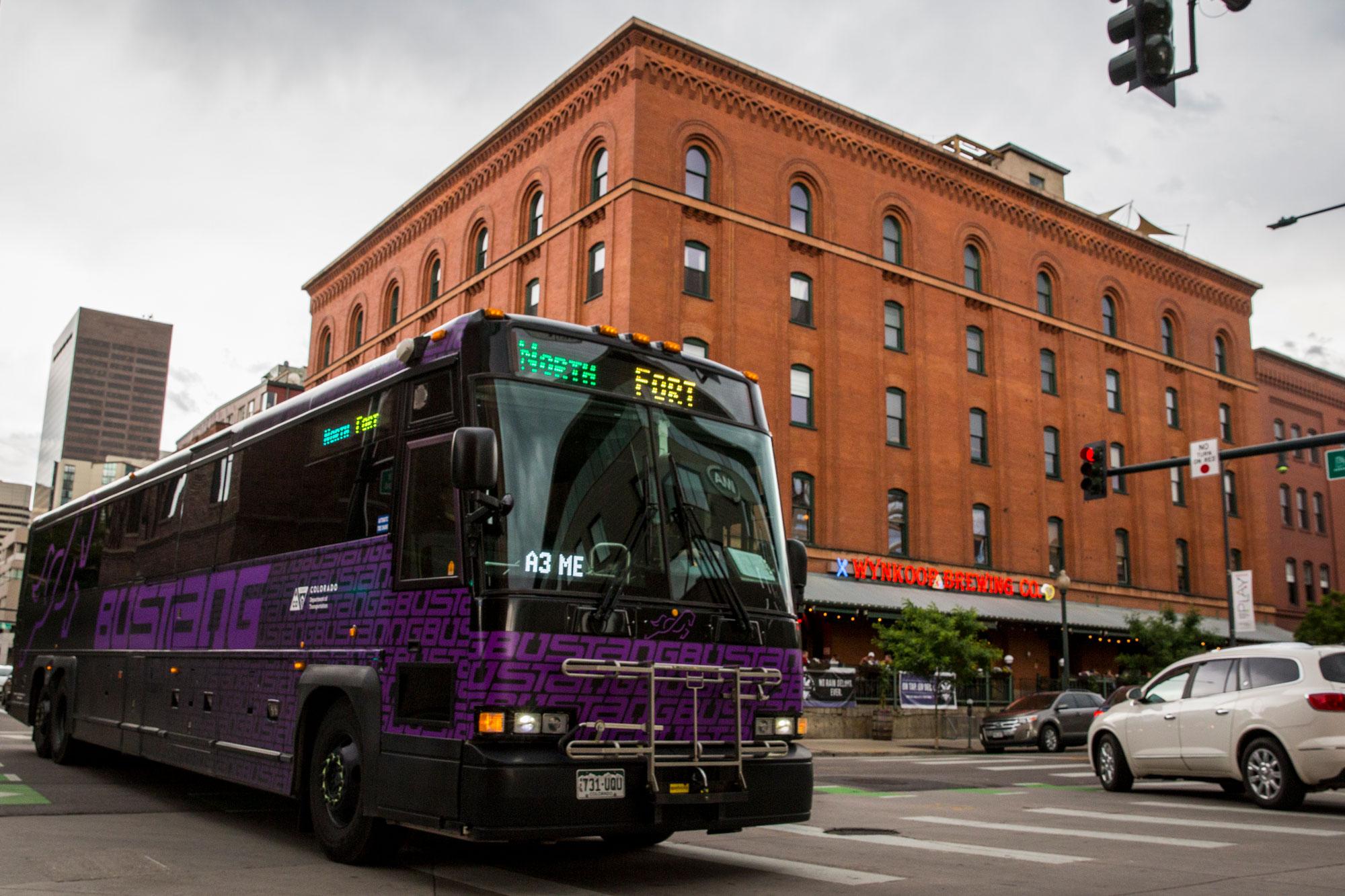
Jamie Grim of Fort Collins travels more than 60 miles to her job in downtown Denver — but she’s not another angry face behind the wheel shaking her fist at traffic.
“I don’t even really notice the commute anymore,” Grim said on a recent morning after she arrived in Union Station. “Because I get on the bus, and I just start reading, or I start watching a movie, or I just kind of zone out.”
She catches the Bustang, a 90-minute ride that costs about $10 one-way. When she drives, Grim said she spends about $25 on gas, tolls and parking and that doesn’t even begin to cover the mental fortitude needed to navigate oft-congested Interstate 25.
“It’s not fun,” she said. “It’s pretty awful actually.”
Bustang was the Colorado Department of Transportation’s first foray into transit when it opened in 2015. The express service connects Denver to Fort Collins, Colorado Springs and the I-70 mountain corridor. It’s been criticized for being outside of CDOT’s lane and once its funding was targeted by legislative Republicans. But the service continues to show remarkable growth and the agency says it’s something of a pilot for a much bigger investment in transit down the line: passenger rail.
Bustang carried more than 100,000 passengers in its first year, well above initial projections of 68,000. That growth has continued since then.
A Former Critic Gets On The Bus
Sen. Larry Crowder, an Alamosa Republican, voted to defund Bustang in 2016. The effort ultimately failed. He thought the money should have been put into roads and bridges at the time.
“But since then, we have been able to reinforce transportation and I actually have turned into supporting the Bustang,” Crowder said. “It’s done remarkably well in rural Colorado. Transportation is a huge issue for us and Bustang helps us fill that void.”
Bustang costs about $3.5 million a year to run, after start-up costs of about $10.7 million — a fraction of CDOT’s $1.6 billion annual budget. Fares now cover about 60 percent of operational costs on the main interregional lines, according to CDOT.
For a comparison, RTD’s fares cover only about 25 percent of its costs — mostly because it offers nearly round-the-clock service.
Bustang has grown from serving mostly commuters on the Front Range to now serving more corners of the state with its Outrider lines like Grand Junction to Durango and Lamar to Colorado Springs.
A CDOT-subsidized Wichita, Kansas to Pueblo bus called Beeline used to stop in otherwise transit-starved towns in the lower Arkansas Valley. But prices and schedules made it difficult for people to use it, said Las Animas Mayor Jim Collins. Then CDOT ended its grant and started Bustang.
“That service continued at a lower cost and at a better schedule,” Collins said. “CDOT did a really good job stepping up and taking over.”
The Outrider lines have lower ridership and thus cost more to operate, said Michael Timlin, Bustang’s operations manager, but he added that they qualify for federal grants that offset costs. Besides, Timlin said, making money isn’t the point.
“We really wanted to reconnect the people in the rural areas to their urban service center, so they could do their medical appointments, go shopping, whatever, and be home for supper the same night,” he said.
A Bid To Fight Gridlock
The other major goal for Bustang is to help alleviate congestion.
“More and more people are coming to the conclusion that we just cannot keep pouring concrete,” Timlin said.
Making roads bigger means more people will drive on them, Timlin said, paraphrasing what transportation researchers call induced demand. With Colorado’s population forecasted to grow by more than two million people by 2040, CDOT plans to put more resources into multi-modal options like Bustang.
Eventually, Timlin said, the agency wants to quadruple the number of its buses on the road and extend service down every major highway in the state. That has the support of Sandra Hagen Solin, spokeswoman for Fix Colorado Roads, a business-backed advocacy group.
“But it needs to be done in the context of the overall transportation network,” she said. “It cannot be pursued at the expense of continued investment in roadways that serve as the foundation of our broader transportation infrastructure.”
The bus lines for Fort Collins and Colorado Springs may also develop demand and some park-and-ride like infrastructure for future Front Range passenger rail service, which Timlin said could be just 10 years away.
“All of us are hopeful that we can get that going ... quickly,” he said.
While expanding Bustang would cost millions, or perhaps tens of millions, that’s a tiny amount compared to the billions rail would likely cost. That concerns Solin.
“I appreciate and understand connecting the two,” Solin said. “But they are two dramatically different options that purely on price could present a challenge in the future.”
That’s all in the early planning stages for now. To be successful, it would likely need voter-approved funding — possibly in the fall of 2020. And that vote could be a test to see if more Coloradans are serious about leaving their cars at home.








